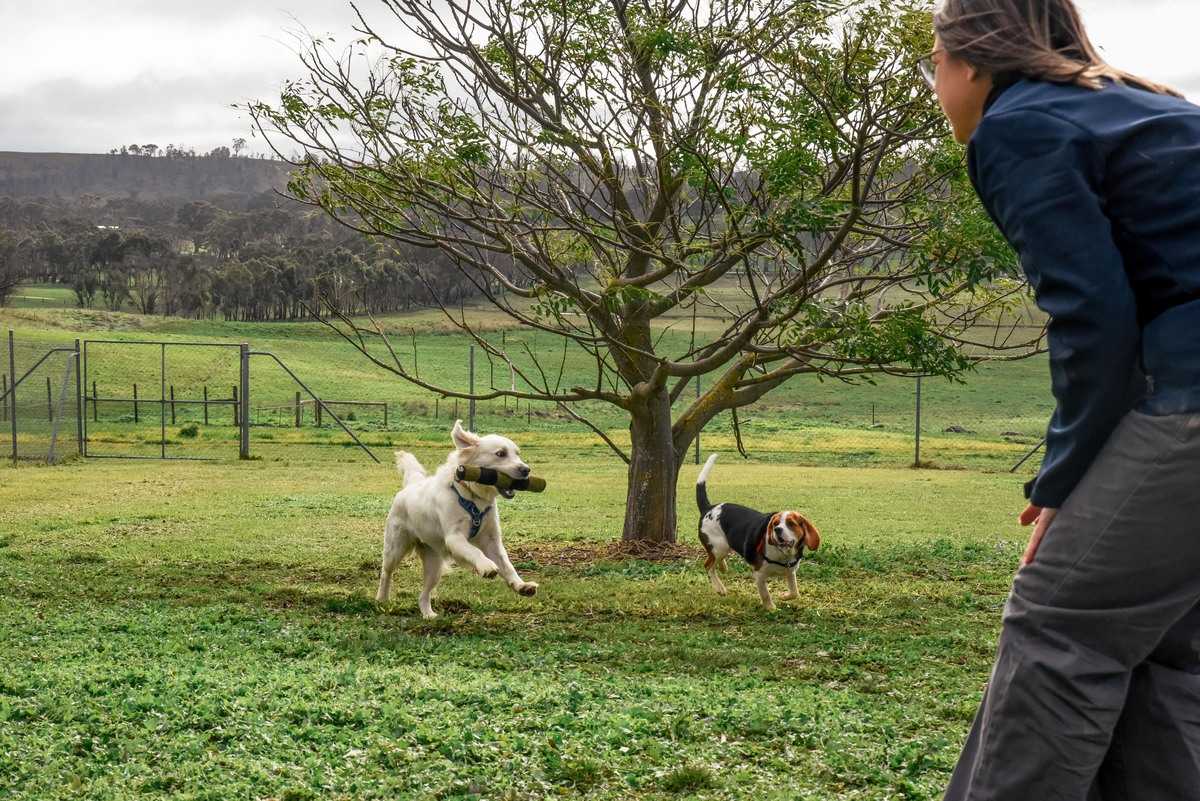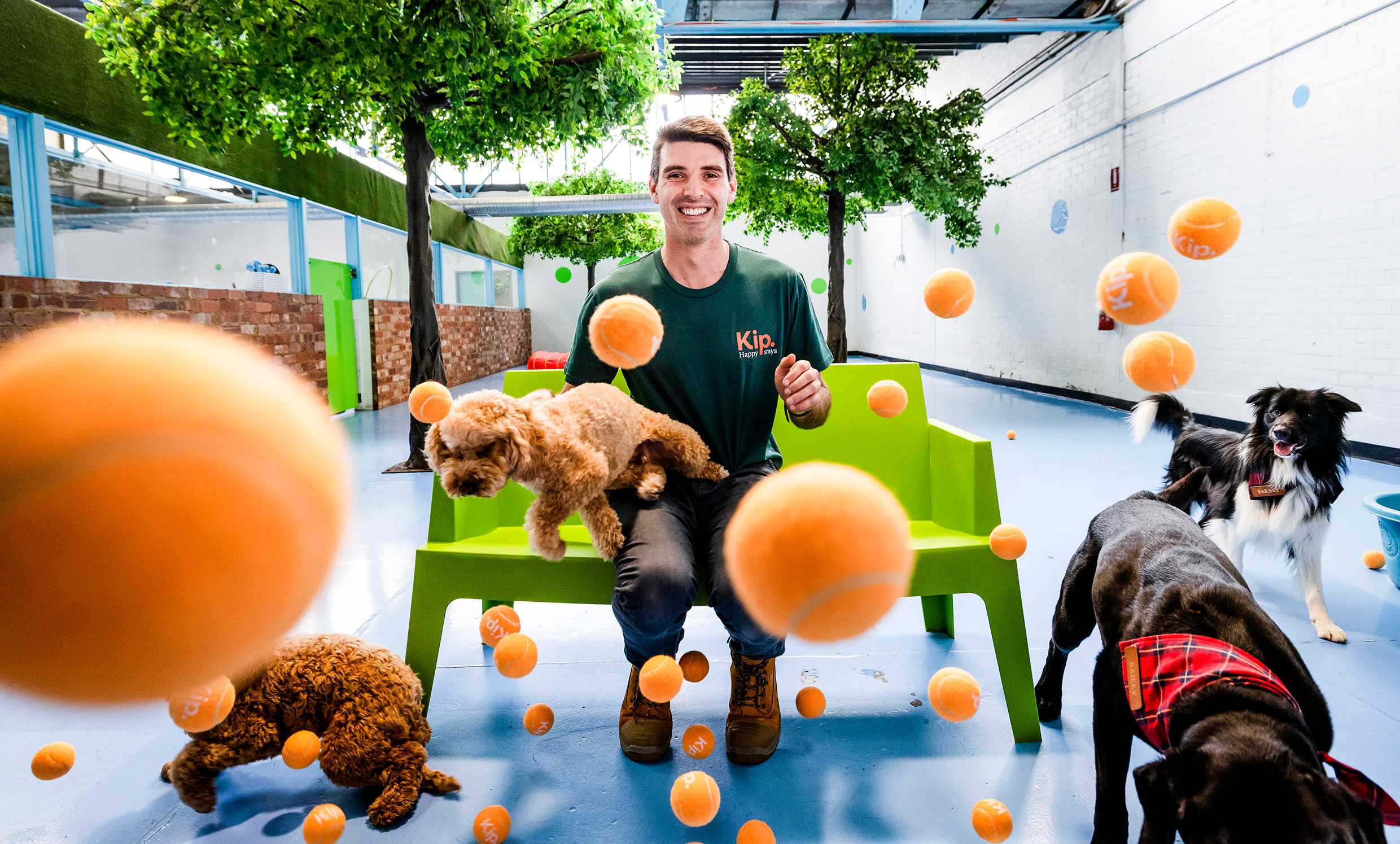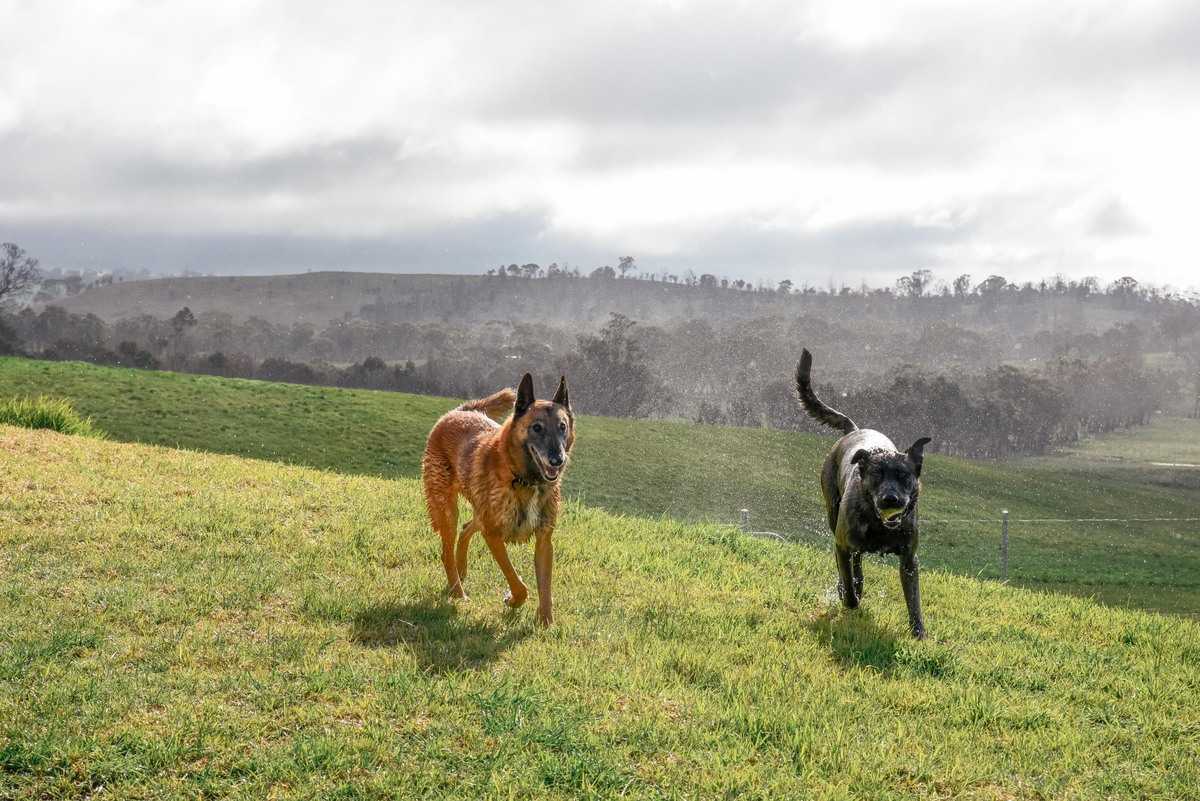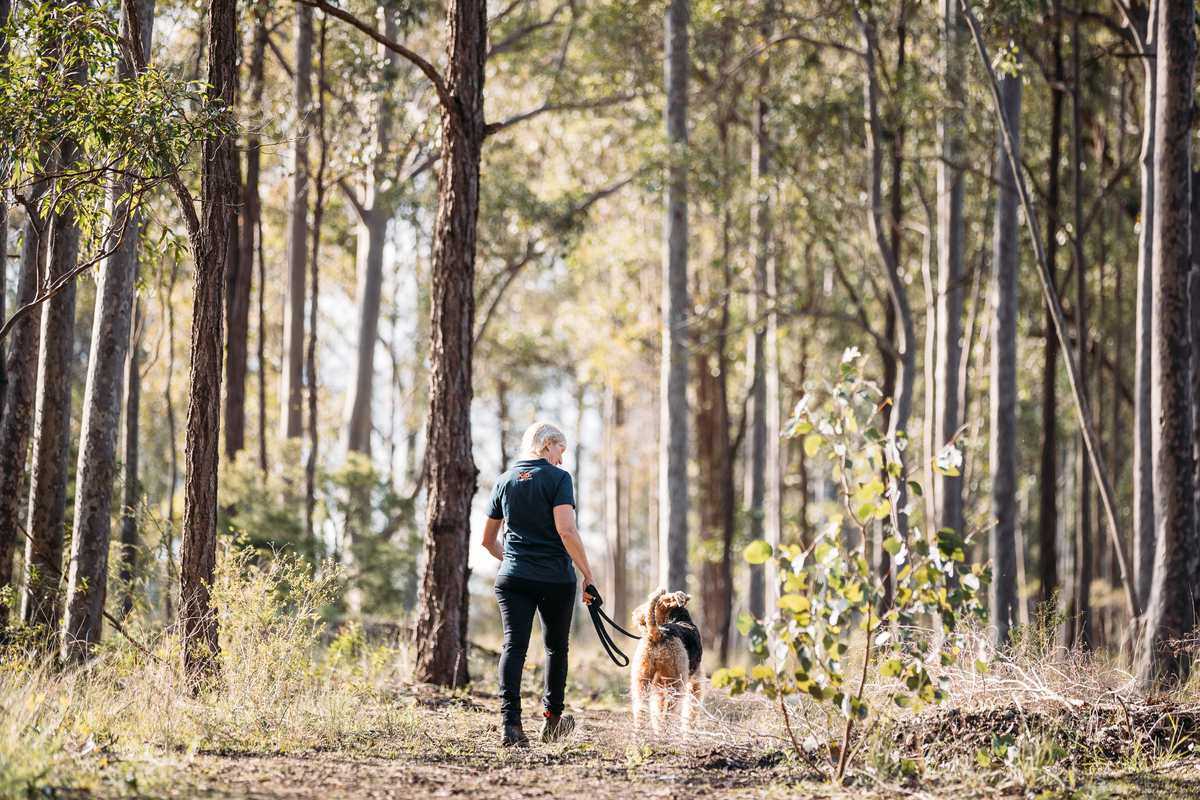“With more Australian pet parents returning to the office, vets and trainers like myself are increasingly seeing more dogs display signs of loneliness and sadly, separation anxiety. There was a surge in dog ownership in Australia during the COVID years, so we can presume that those pandemic puppies are finding their new way of life, i.e. their owners not around as often, challenging,” says Lara Shannon, one of Australia’s leading dog behaviourists and canine experts.
How to identify separation anxiety in your dog
Signs can range from the obvious to very subtle, and many are similar for dogs that are bored. Doggy daycare can, therefore, help with loneliness, separation anxiety and boredom. Signs may include:

- Following you around the home and watching you intently as you get ready for work. You may notice them trembling, licking their lips and flicking their tongue rapidly, pacing, increased drooling or salivation, and shaking.
- Over-exciting greetings when you get home.
- Vomiting or diarrhea, defecating and/or urinating in unusual places and times, even when toilet trained.
- Not eating or drinking until you get home.
- Licking themselves excessively – removing the hair, skin and sometimes, if a dog is in a constant anxious state, they can even wear away the tissue right down the bone.
- Excessive barking, whining, crying or howling. High-pitched rapid barking can indicate stress in dogs left alone. It’s worth videoing them when out, or checking with your neighbours as to what they hear or observe.
- Hyper-vigilance, unable to relax when alone.
- Listlessness or sleeping all day can also indicate loneliness and/or boredom.
- Destructive behaviours occurring only when you are not around, such as digging, chewing, scratching doors or furniture and trying to escape the home.
Lara’s Top Tips to Help
There are multiple ways to help mitigate dog loneliness and separation anxiety, such as:

- Human (or dog) company: Some dogs rely on a particular person or dog, others just need company of any description, so a furry friend, family member or doggy daycare can help.
- Access inside the home: For many dogs that are kept outside, simply providing them with access inside the home, ideally your bedroom or lounge – can often result in immediate calm.
- Exercise & mental stimulation: Establish a daily exercise and feeding routine and leave them with interactive toys, puzzles and long-lasting chews or bones to keep them occupied.
- Independence training: Start in small doses when you are at home, with their bed or crate in another room/outside and leaving them with a long-lasting chew, bone or interactive toy. Start so they can still see you, using a baby gate or window as a barrier. Work up to giving them a bone or long-lasting chew, set up your phone to record what they do, and calmly walk about the door and just walk around the block. Come back whilst they are still chewing and haven’t started to panic. Slowly increase the time away from them so panic never sets in.
- Consider a dog walker to take them out in the middle of the day.
- Change your departure routine and calm departures/arrival: Desensitise them to your departure, grab keys and bag when at home, and constantly change your routine.
- Calming products: In mild cases, calming pheromone sprays, collars and diffusers e.g. Adaptil for dogs may assist, as can a Thundershirt in cooler weather, Vet prescribed CBD Oil.
- Leaving the radio or TV on: classical music helps some dogs feel calm.
- Medication: Talk to your Vet, ideally, a Vet Behaviourist, for more than mild anxiety, as medication may be required to help with the behaviour modification training.
Setting up a doggy date for success
So now you know the signs and have some ideas on what might work for your dog. Let’s talk about how to set them up for success.

- Neutral territory is always best for first encounters between dogs, so have them meet outside and go for a walk together. If you want to socialise a puppy that isn’t yet fully vaccinated, a friend’s or neighbour’s place is good, and ensure all other pets are fully vaccinated.
- Introduce them in a controlled manner, with plenty of space between them. Try to have your dog sit and be calm so they don’t rush up to other dogs.
- Ideally on-lead, but be mindful of leash reactivity if they feel a bit anxious or frustrated. Always reward calm behaviour with a treat or praise. Never force interactions or allow one dog to jump all over another dog.
- I always encourage any dog-to-dog greetings on lead to be done with the dogs being manoeuvred so they start by sniffing each other from behind rather than face to face. Count to 3 seconds, then give them some distance. (At 3 seconds dogs usually decide if they are either going to play or fight).
- Watch both dog’s body language at all times and for any signs of anxiety, including the subtle tongue flicking, yawning, tail tucked or submissive behaviours, and any aggressive reaction from either dog, which can also be a fear-based response.
- Make sure the play is not one-sided. Ideally, they will be mimicking each other’s play style. Look for play bows, taking turns, pausing in between plays before both resuming again. A tag and run request, not to be confused with a dog coming up to nip at your dog, but rather when dogs are interacting nicely, and one bounces up to give a bit of a ‘tag’, then runs away, inviting your dog to chase.
- Reward bigger dogs for playing gently with the younger or smaller pooch.
- Doggy daycares and businesses, like Kip, have the expertise to read dog behaviour and improve the way your dog interacts with other pups and can help with teaching your dog some manners.

Dog Behaviour to Watch Out For
You’ve got the tips, but how do you know if your dog is actually enjoying playing with their new best furry friend? Keep an eye out for the signs below, and remember, they can be subtle so be vigilant.
- One dog is constantly on top of the other or dominating the play.
- A larger dog nipping or grabbing at a smaller dog or puppy’s neck, legs or body. A larger dog nipping or grabbing at a smaller dog or puppy’s neck, legs or body.
- Be careful about letting two very strong dog breeds play too rough and bite each other too much, even if in play, as it can quickly escalate.
- Likewise, watch the play between a number of dogs carefully because if one starts to feel threatened or anxious and acts out aggressively to protect themself, you want to be able to quickly remove all dogs calmly from the situation and not allow an all-out war to break out.
- One dog is constantly chasing another and nipping at their heels. This is different to a tag & chase. You might see this with working dogs chasing smaller dogs at the park, so you need to be careful it doesn’t start to get intimidating for the dog being chased so they feel harassed or threatened, or the instigator doesn’t start to get over-excited and up the biting levels.
- One dog pouncing on another dog to wrestle when it is showing signs they aren’t comfortable.
- Mounting: there are many reasons why dogs hump, and it isn’t always dominance or sexual, but it isn’t great manners or can hurt another dog and set off a fight if an older dog has bad legs, or the other dog feels threatened.
- Be extra careful if there are small and large dogs playing together as the risk can be higher.
Join us to help minimise dog loneliness!
Kip Happy Stays is hosting a “Lonely Barks Club” this Valentine’s Week (12-16 February 2024) and we’d love to see you there! Our daycares will offer a Kissing Booth, Cuddle Corner, a love story story time and more romantic activities. Find your local daycare here.




